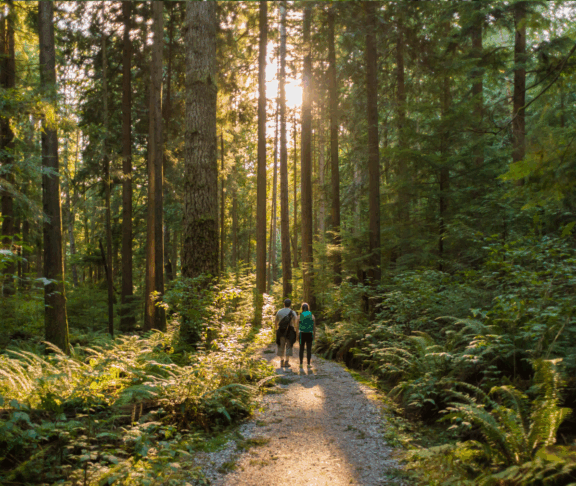
Terran Fielder
Media Specialist, Earth Day
Today is National Tree Day in Canada; the ideal opportunity to recognize Canada’s 369 million hectares of forest.
Nearly 9% of the world’s total forest area, they are more than just a ton of timber trees; they are home to more than 140,000 plant and animal species, they regulate the climate, and they filter the air and water we all depend on.
Yet the forests of Canada, perhaps one of the defining symbols of the nation, are not fully protected. Last year Canada lost nearly 4 million hectares of natural forest, as the logging industry generated billions in revenue from timber. Often cutting down primary forests that until now have never been disturbed by humans. In Ontario alone, from 2016 to 2020, 30% of certified boreal forest logged was over 100 years old, destroying enough trees to cover New York City and Washington, D.C. combined.
This sort of logging is happening even though Canada has more “sustainably certified” logging operations than any other country in the world. The Forest Stewardship Council (FSC) and Sustainable Forestry Initiative (SFI), are meant to make this type of logging harder, but how effectively are they doing this? And how incentivized are the Canadian political parties to enforce conservation, when the forests are on public lands meaning they receive a cut of the billions of dollars made over the past decade.
Cutting Trees Pumps Carbon Dioxide Into The Air
Labeling logging “sustainable” can mislead consumers while allowing the destruction of ancient ecosystems and in the process releases massive amounts of carbon dioxide back into the atmosphere. That’s because when trees grow, they absorb carbon dioxide from the air and store it in their trunks, branches, leaves, and roots—a natural process called carbon sequestration.
This stored carbon can remain locked inside the tree for centuries. However, when trees are cut down much of it is released back into the atmosphere as carbon dioxide, a greenhouse gas that contributes to global warming. This release happens because the carbon once held tightly within living tree tissue is exposed to air and microbes that break down the organic material, causing carbon to escape as CO2. Additionally, the machinery used in logging and transporting timber releases fossil-fuel carbon emissions, adding further to atmospheric carbon.
Ancient or old-growth forests are especially important because they store huge amounts of carbon accumulated over long periods. So destroying these forests not only stops future carbon capture but also releases these large carbon reserves, accelerating climate change. In other words, logging is not just removing trees—it is effectively turning critical carbon storage sites into carbon sources, worsening the greenhouse effect and fueling climate change.
Trees Are Good for Our Health
That is not all, trees also catch air particulates through their plant pores or when particles stick to their “skin.” Which means trees are actually good for our health too. In fact, people who live around trees are healthier overall.
Less trees means a decline in air quality which fuels asthma, heart disease, and respiratory illnesses. Water pollution caused by deforestation contaminates drinking sources, spreading diseases like cholera and dysentery.Plus, forest loss can increase outbreaks of malaria and other mosquito-borne diseases.
Deep Roots Soil Stability
Trees also play a vital role in protecting the environment by keeping the soil in place and helping manage the flow of water. Think of them as a sponge-and-shield system: their leaves and branches slow down rainfall on its way down to the ground, while tree roots help the soil soak up and hold onto that water. This prevents the ground from drying out or washing away, anchoring the soil and reducing erosion.
When trees are removed, the soil becomes dry and loose. This makes it harder for plants to grow and easier for topsoil, along with pesticides and other pollutants, to be carried into rivers and streams and then our drinking water. Without healthy soil and tree cover, rainwater can’t soak in properly and instead flows quickly over the surface, raising the risk of flooding.
Planting Seeds for the Future
Restoration of these ecosystems is possible. Canada has a long history of replanting efforts, and Canada has committed to investing more than $3 billion over the next decade to plant two billion new trees.
However, tree planting must be strategic: native species and long-term care are key to ensuring their successful regrowth. Community-based tree planting programs can help increase the chances of success. For example, between 2015 and 2020, over 250,000 trees were planted in Manitoba’s Boreal Forest, through EARTHDAY.ORG’s community based The Tree Canopy Project. Reforestation not only restores the environment; it protects community health and creates green jobs.
The good news? You can help restore forests. Since 2010, EARTHDAY.ORG has planted tens of million more trees across the globe, focusing on regions hit hardest by natural disasters and climate change. Whether you’re an individual, a business, or a government group, you can support this work by donating, getting your hands dirty and planting trees, or spreading the word.
Visit EARTHDAY.ORG’s The Canopy Project map to learn more and find a planting project near you.



